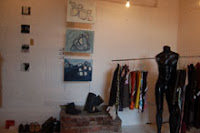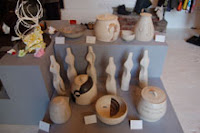
The great American politician, writer and inventor Benjamin Franklin famously said “In this world nothing is certain but death and taxes”, and they're something most of us would like to get out of.
Peace Tax Seven, however, a group of conscientious objectors, is using tax as a political protest by withholding the proportion of their taxes they calculate goes towards war and military activities. To pay tax towards military activities, they believe, is akin to a modern form of conscription, and is “morally equivalent to fighting a war”.
The group ranges from a toy designer and company director to a Welsh Buddhist, accountant, author and film maker. Birgit Völlm, a psychiatrist and researcher at the University of Manchester until earlier this year, explains: “War costs a lot of money, and my money was supporting that.” She finds it worrying “how easily countries can get involved in war”.
Völlm insists we should “all live according to our own conscience and do what we think is right.” She says: “A lot of people don't really think about what happens to their money, as it's not very noticeable.”
It is thought that 10% of the government's expenditure goes on the military and a third, or £88 billion, of the government's fixed capital assets belong to the Ministry of Defence.
The Peace Tax Seven suggests that money that currently goes towards war should be put into a “ring-fenced” Peace Fund and spent on “alternative ways of making peace, including negotiations and international development”. Völlm explains: “We also need to look at the underlying causes of war like inequality.”
Völlm points out “one hundred years ago people took slavery for granted and thought rights for women wouldn't change. People also had to go to war”. She remains optimistic, though, that “sometime in the future we will have the right not to pay for war”.
The Peace Tax Seven website is full of emotive language – 'rights' are 'violated', paying tax equates to 'paying for the government's killing machine'. It claims that 90 per cent of the casualties of war are civilians. Roy Prockter argues “every bomb and bullet kills twice”, saying there are “indirect victims dying of want while the world's wealth is wasted on weapons”.
As a doctor, paying taxes that go towards war is incompatible with Völlm's professional values: she cannot support something that “takes life away from people”, as the role of a doctor is to “help people and ease suffering”. Both Prockter and Völlm argue that the money would be better spent on fundamentals such as clean water and basic healthcare.
The Peace Tax Seven has the support of Quakers, Buddhists and Anglicans. Völlm became involved through Manchester's Quaker Peace Corps, and helped set up an International Conscientious Objectors Day in Manchester, which happens in May every year.
Manchester has a long radical history, and in 1980 became the world's first nuclear free city, creating the Peace Gardens and sculpture. Earlier this year, it hosted the 12th International Annual Conference on War Tax Resistance and Peace Tax Campaigns, which brought together campaigners from America, Spain, Germany, the Netherlands and Columbia.
Withholding tax is part of a history of creative protest that goes back to the American author, naturalist and philosopher Henry David Thoreau. Thoreau was imprisoned in the 1840s for refusing to pay tax towards the state of Massachusetts, because it advocated slavery. More recently, in America it is estimated there were 20,000 war tax resisters against the Vietnam war by 1970.
If the government didn't take any notice of the estimated two million protesters against the Iraq war, why would it listen to seven individuals withholding tax, rather than sending the bailiffs round?
UK court cases brought by the Peace Tax Seven have failed, but the group is currently raising £50,000 to take their case to Strasbourg, and defend its right to “freedom of thought, conscience and religion” as set out in the Human Rights Act under the European Convention of Human Rights.
The issue of the right to withhold war tax has been tabled as an Early Day Motion in the House of Commons, as well as a number of Private Members Bills, the last one being raised by John McDonnell in 2002. A number of MPs support the seven, including Jim Dobbin, Labour MP for Heywood and Middleton. Völlm is a member of the Green Party, which supports the protesters.
Few of us would go as far as to withhold our taxes, or could afford to, and it's not really an option unless you're self-employed, as it's almost impossible to withhold tax through the PAYE system.
However, the Peace Tax Seven opens debate on an issue it often seems we have little choice in, and puts moral pressure on the government. It also acts as a conscience for the rest of us.
If you want to do something, but don't want to go as far as withholding your taxes, visit
http://www.peacetaxseven.com/ and sign the petition, distribute leaflets or write to your MP.
You can also join the organisation Conscience and fill in a 'Peace Tax Return' form which looks like a tax return form and can be sent to the Treasury to declare your objection to paying for war.
Völlm says the group appreciates emails, which can be used to show the government how much public backing there is for the cause. She also encourages members of the public to attend the group's trials to show their support.






















